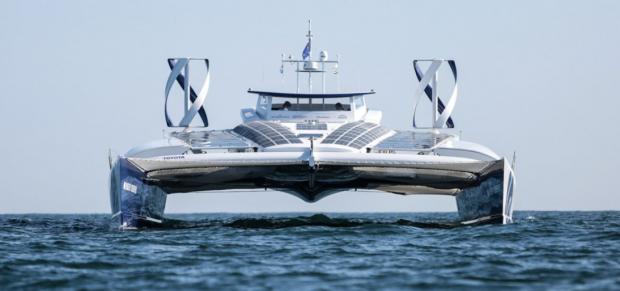
Breaking News
 Battleborn Batteries Responds! Their Overheating Device is a "Feature" not a "Problem
Battleborn Batteries Responds! Their Overheating Device is a "Feature" not a "Problem
 Actor Liam Neeson Outs Himself as MAHA After Narrating Pro-RFK Jr. Documentary Slamming...
Actor Liam Neeson Outs Himself as MAHA After Narrating Pro-RFK Jr. Documentary Slamming...
 Kyle Rittenhouse announced on social media Wednesday that he has tied the knot.
Kyle Rittenhouse announced on social media Wednesday that he has tied the knot.
 JUST IN: President Trump Grants Tina Peters Pardon
JUST IN: President Trump Grants Tina Peters Pardon
Top Tech News
 Build a Greenhouse HEATER that Lasts 10-15 DAYS!
Build a Greenhouse HEATER that Lasts 10-15 DAYS!
 Look at the genius idea he came up with using this tank that nobody wanted
Look at the genius idea he came up with using this tank that nobody wanted
 Latest Comet 3I Atlas Anomolies Like the Impossible 600,000 Mile Long Sunward Tail
Latest Comet 3I Atlas Anomolies Like the Impossible 600,000 Mile Long Sunward Tail
 Tesla Just Opened Its Biggest Supercharger Station Ever--And It's Powered By Solar And Batteries
Tesla Just Opened Its Biggest Supercharger Station Ever--And It's Powered By Solar And Batteries
 Your body already knows how to regrow limbs. We just haven't figured out how to turn it on yet.
Your body already knows how to regrow limbs. We just haven't figured out how to turn it on yet.
 We've wiretapped the gut-brain hotline to decode signals driving disease
We've wiretapped the gut-brain hotline to decode signals driving disease
 3D-printable concrete alternative hardens in three days, not four weeks
3D-printable concrete alternative hardens in three days, not four weeks
 Could satellite-beaming planes and airships make SpaceX's Starlink obsolete?
Could satellite-beaming planes and airships make SpaceX's Starlink obsolete?
Energy Observer: On board the world's first hydrogen-powered boat

Moored in the San Francisco Bay, the Energy Observer is nearly impossible to ignore. A nonstop flow of tourists walking the city's historic Embarcadero stop for selfies with the ship (even though most don't know what it is). I watch as I wait to board.
My tour of the 100-foot catamaran is a result of good or bad luck, depending on your point of view. The Energy Observer and its 10-person crew are on an unscheduled stop here due to weather, on their way from Southern California to Hawaii. The ship has been at sea since 2017, out to prove its technological tools in the harshest possible conditions.
"If they can survive here, they'll work really well on land." says Katie Nicolet, the ship's scientist. "The ultimate goal is to showcase that we can use renewable energies to navigate and go around the world" without any type of emissions.
Without a doubt the most striking feature of the catamaran are its 202 square meters of solar panels, covering the majority of its exposed surface. Most of the time they feed the batteries that power everything on board, from the engines to the kitchen appliances. "But on a day like today, when we drop anchor, we don't have engines (running); we're producing too much energy. So instead of wasting it, we're going to turn the excess energy into hydrogen." says Nicolet.
Using reverse osmosis, pumped-in seawater is converted to pure water that's then electrolyzed by the onboard batteries. The electrolyzation separates the water molecules into pure oxygen and hydrogen. The hydrogen is stored in eight tanks on the ship's wings. Nicolet says the tanks can store enough hydrogen to power the ship for six days. When the batteries run low and there's not enough sun, the hydrogen is used to create electricity using the same fuel cell found in the Toyota Mirai sedan.
The chemical process the fuel cell uses to create electricity also produces water and heat. The water is collected in tanks, and the heat is used to warm the cabin and for hot water.

 First totally synthetic human brain model has been realized
First totally synthetic human brain model has been realized Mach-23 potato gun to shoot satellites into space
Mach-23 potato gun to shoot satellites into space

